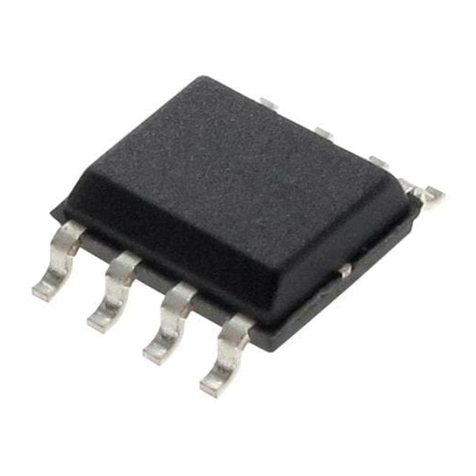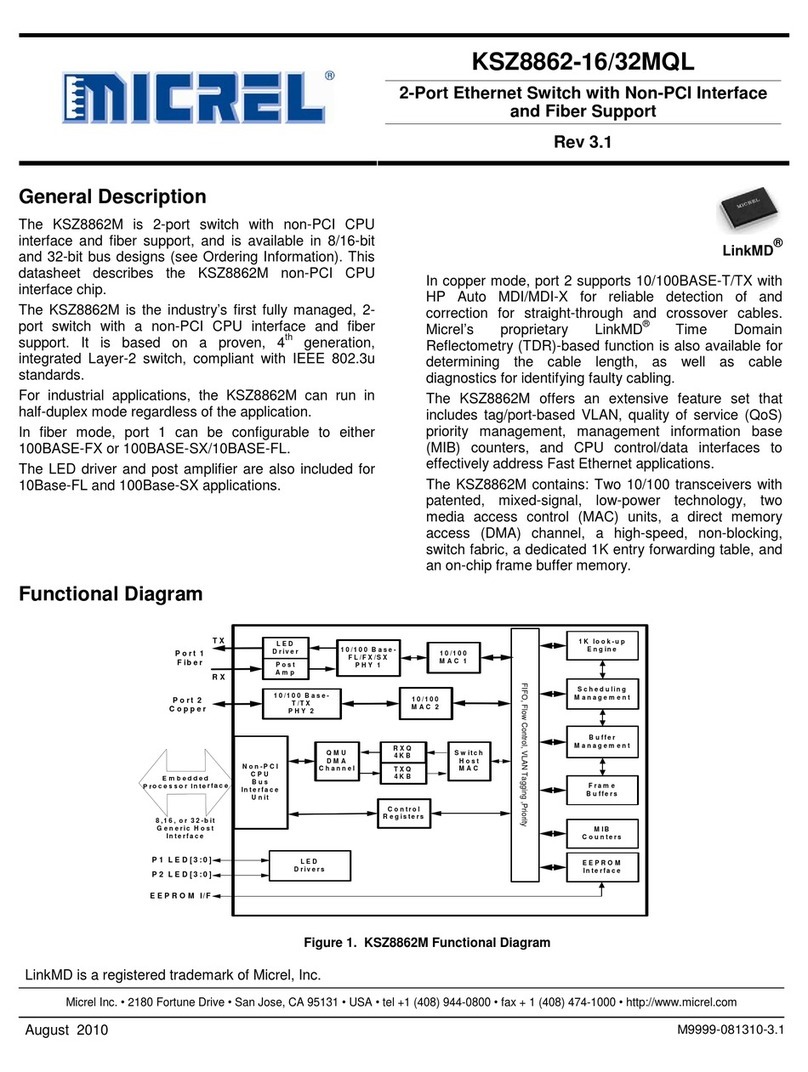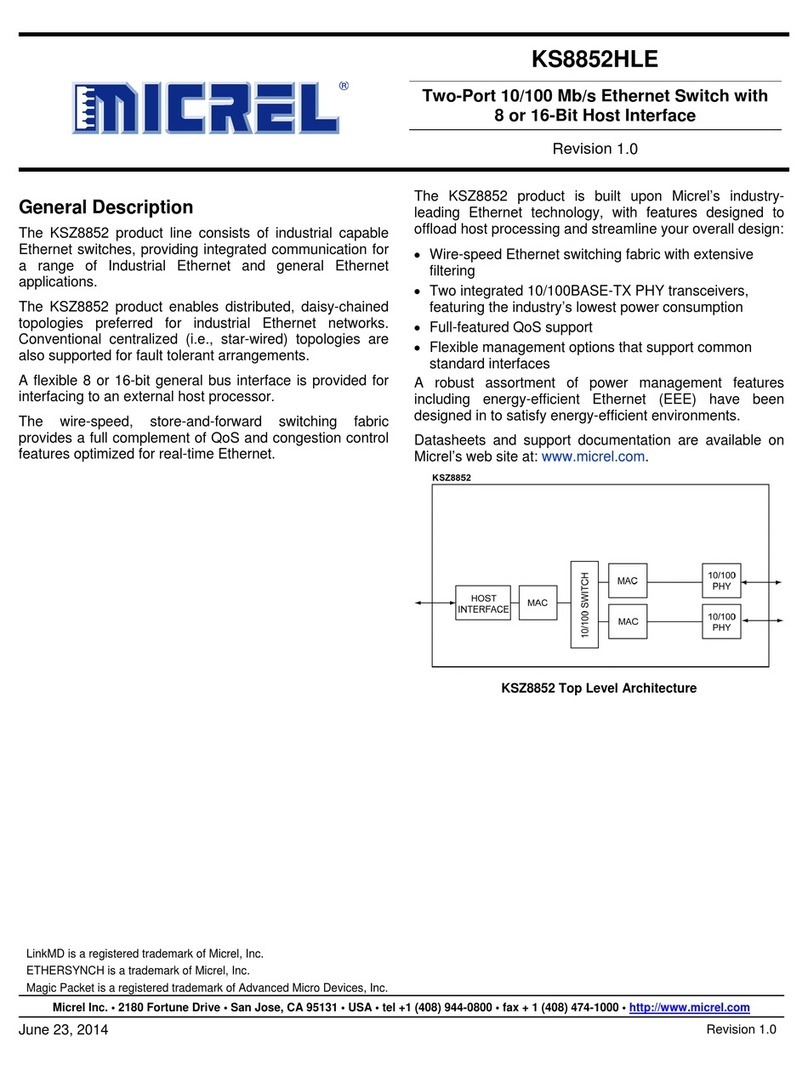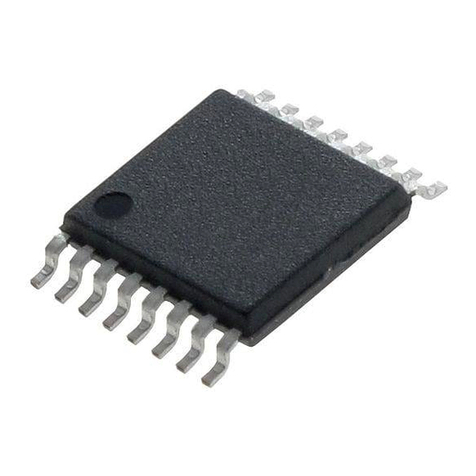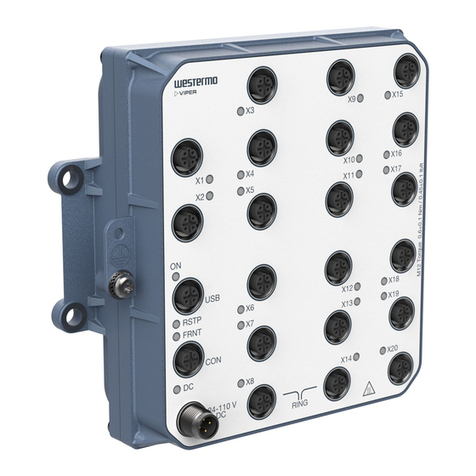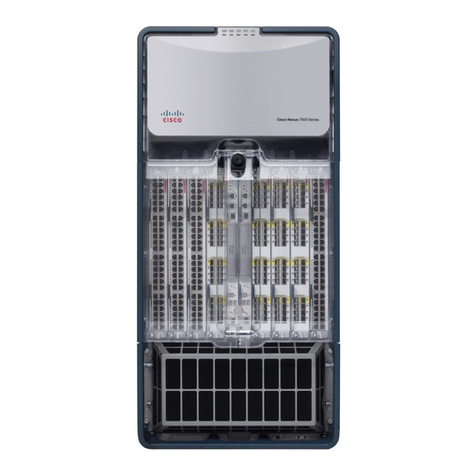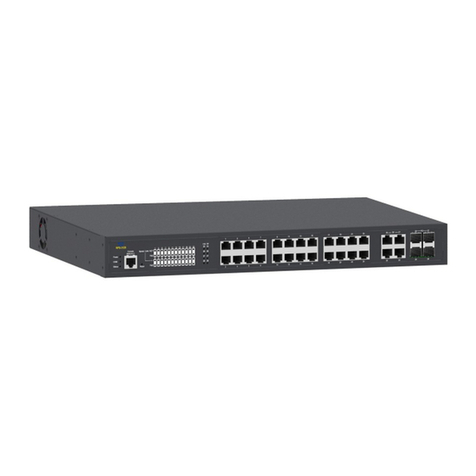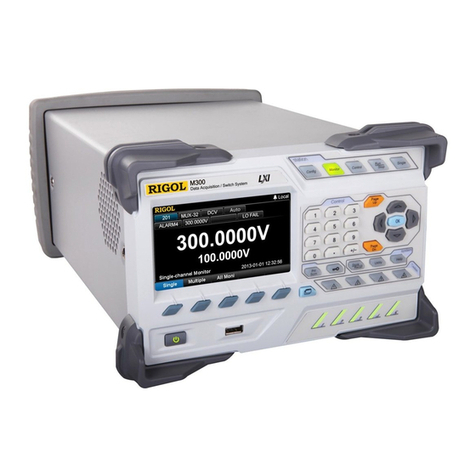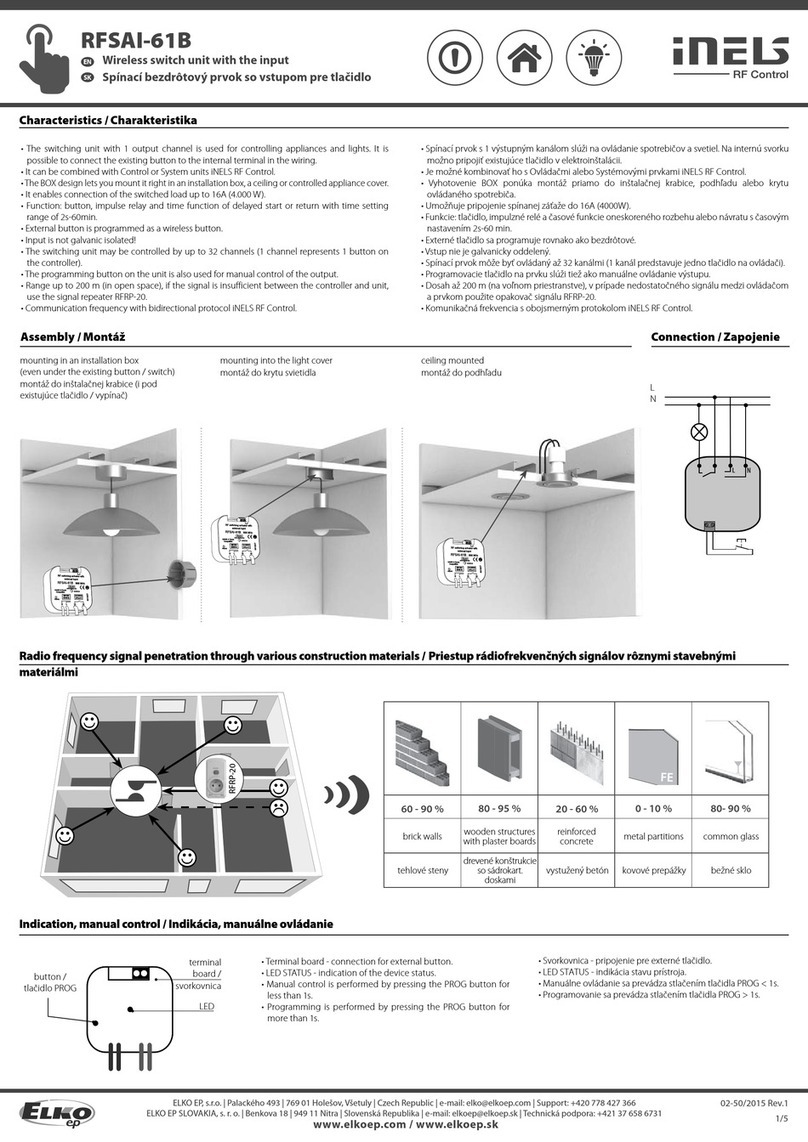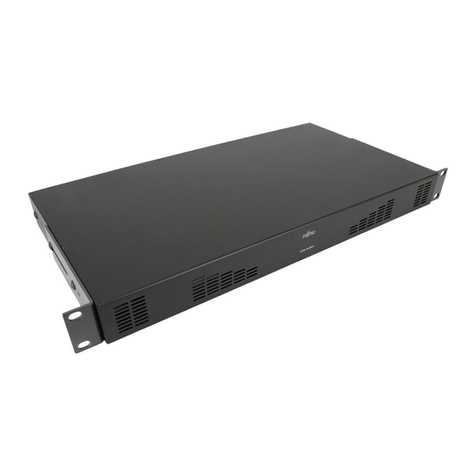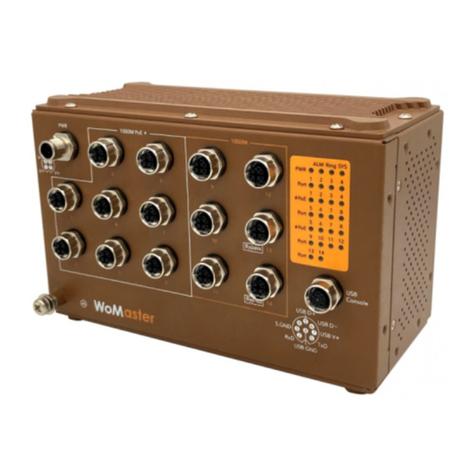Micrel KSZ8864 User manual

KSZ8864 Evaluation Board User’s Guide
Micrel Inc. Page 1 5/9/2014
KSZ8864
Evaluation Board User’s Guide
KSZ8864 Integrated 4-port 10/100 Ethernet Managed
Switch
Rev 1.1 May 2014

KSZ8864 Evaluation Board User’s Guide
Micrel Inc. Page 2 5/9/2014
Table of contents
1.0 Introduction...........................................................................................................................4
2.0 Features.................................................................................................................................4
3.0 Evaluation Kit Contents........................................................................................................4
4.0 Hardware Description...........................................................................................................5
4.1 Strap in Mode....................................................................................................................6
4.1.1 Feature Setting Jumpers.............................................................................................7
4.2 EEPROM Mode................................................................................................................8
4.3 SPI Mode ..........................................................................................................................9
4.4 10/100 Ethernet Ports......................................................................................................10
4.5 LED indicators................................................................................................................10
4.6 MII/RMII Port Configuration.........................................................................................10
4.6.1 Port 4 SW4-MII Jumper Configuration...................................................................11
4.6.2 Port 3 SW3-MII Jumper and Register Configuration..............................................12
4.6.3 Port 4 SW4-RMII Jumper Configuration for KSZ8864..........................................12
4.6.4 Port 3 SW3-RMII Jumper Configuration for KSZ8864..........................................13
4.7 MDC/MDIO Interface for MIIM Registers and SMI mode ...........................................13
5.0 Software Description ..........................................................................................................15
5.1 Introducing Application Software Tools ........................................................................15
5.2 Install Window Driver First............................................................................................15
5.3 DOS SPI Tool.................................................................................................................18
5.4 MDC/MDIO MIIM Software Tool.................................................................................19
5.4.1 MDC/MDIO MII software installation....................................................................19
5.4.2 On board jumper setting and Software Application ................................................19
5.5 MDC/MDIO SMI Software Tool....................................................................................21
5.5.1 MDC/MDIO SMI software......................................................................................21
5.5.2 On board jumper setting and Software Application ................................................21
5.6 EEPROM Software Tool ................................................................................................22
5.6.1 EEPROM software installation................................................................................22
5.6.2 On board jumper setting and Software Application ................................................22
5.7 Window SPI Software Tool............................................................................................25
5.7.1 Window SPI software installation ...........................................................................25
5.7.2 On board jumper setting and Software Application ................................................25
6.0 Reference Documents.........................................................................................................26
8.0 Bill of Material....................................................................................................................26

KSZ8864 Evaluation Board User’s Guide
Micrel Inc. Page 3 5/9/2014
List of Figures and Tables
Figure 1 KSZ8864 Evaluation Board .........................................................................................5
Figure 2 KSZ8864 Evaluation Board Block Diagram................................................................6
Table 1 Feature Setting Jumpers.................................................................................................7
Table 2 Reserved Jumpers..........................................................................................................8
Table 3 EEPROM Mode Settings...............................................................................................8
Table 4 SPI Mode Settings .........................................................................................................9
Table 5 LED Modes..................................................................................................................10
Table 6 SCONF [1:0] pin [47,48] for SW4-MII PHY/MAC mode..........................................11
Table 7 Configure for SW4-MII...............................................................................................11
Table 8 Configure for SW3-MII...............................................................................................12
Table 9 Configure for SW4-RMII ............................................................................................12
Table 10 Configure for SW3-RMII ..........................................................................................13
Table 11 MDC/MDIO Settings for MIIM................................................................................14
Table 12 MDC/MDIO Settings for SMI...................................................................................14
Revision History
Revision Date Change
1.0 10/21/10 Initial release
1.1 05/09/14 Update pictures, add RJ49
and RJ50 for rev1.2 eval
board

KSZ8864 Evaluation Board User’s Guide
Micrel Inc. Page 4 5/9/2014
1.0 Introduction
The KSZ8864 is Micrel Operations’ new generation integrated 4-port switch with a 64-pin small
package. The KSZ8864 device consists of two PHYs and four MACs. Two of MACs support either
MII or RMII interfaces for dual processor/DSP data transfer. Higher speed SPI and MDC/MDIO
interfaces can fully manage the 4-port switch by the processor. The device had been designed with
cost sensitive systems in mind but still offers a multitude of features such as switch management;
port and tag based VLAN; 1/2/4-queue QoS priority; a dual MII/RMII option data interfaces and
CPU control interfaces of SPI, MDC/MDIO with MIIM/SMI. MIIM is the standard IEEE 802.3
MII Management Interface. SMI is non-standard Serial Management Interface that can access all
registers by the Management Data Input/output MDIO interface. The KSZ8864 is an excellent
choice in current complex Ethernet applications with single processor or dual processors, industrial
automatic, automotive, etc. fields and as a standalone 4-port switch.
The KSZ8864 evaluation board is designed to allow the user to experience first-hand the rich
feature set of these existing 4-port switches of KSZ8864CNX/RMNUB. The evaluation board is
highly configurable and easy to use.
2.0 Features
•Micrel KSZ8864 Integrated 4-port 10/100 Managed Ethernet Switch
•2 RJ-45 Jacks for Ethernet LAN with Corresponding Isolation Magnetics.
•Auto MDI/MDIX on all Ports.
•1 PHY mode and 1 MAC mode 40-pin male/female connectors are for the port 3 Switch
SW3-MII/RMII Interfaces.
•1 PHY mode and 1 MAC mode 40-pin male/female connectors are for the port 4 Switch
SW4-MII/RMII Interfaces.
•1 USB Port Interface Configurable to emulate interfaces of EEPROM, SPI interface,
MDC/MDIO with SMI Interface and access all MIIM registers.
•On Board EEPROM
•2 LEDs Per Port to Indicate the Status and Activity
•5VDC, 2.5A Universal Power Supply
3.0 Evaluation Kit Contents
The KSZ8864 Evaluation kit includes the following:
•KSZ8864 Evaluation Board Rev. 1.x
•KSZ8864 Evaluation Board User’s Guide Rev 1.x
•Micrel EEPROM/SPI/SMI/MIIM Configuration Software
•KSZ8864 Evaluation Board Schematics and BOM
•The software, schematics and other design information will be found in the hardware design
package in the Design Kit of the KSZ8864 Ethernet switch product on Micrel website.
(Contact your Micrel FAE for the latest schematic).
•The USB cable is not included.

KSZ8864 Evaluation Board User’s Guide
Micrel Inc. Page 5 5/9/2014
4.0 Hardware Description
The KSZ8864 evaluation board is in a compact form factor and can sit on a bench near a
computer/laptop. There are three options for configuration: strap in mode; EEPROM mode; and
SPI mode. Strap in mode configuration is easily done with on board jumper options. EEPROM
mode and SPI mode are accomplished through a built in USB port interface. Using Micrel
EEPROM software and your PC, you can reprogram the EEPROM on board by the USB port. Or
using Micrel SPI software and your PC, you can access the KSZ8864’s full feature set registers by
the USB to SPI interface. The board also features the MII connectors for the Switch MII/RMII
interface on port 3 and port 4. These are to facilitate connections from the switch to an external
MAC or PHY with MII/RMII interface.
The KSZ8864 evaluation board is easy to use. There are programmable LED indicators for link and
activity on all ports and a power LED. A manual reset button allows the user to reset the board
without removing the power plug. A standard 5VDC power supply is included so that the user can
supply power from any 110-240 Volt AC wall or bench socket, and the power also can be provided
by USB port when close pin 2-3 of the JP47 jumper.
Figure 1 KSZ8864 Evaluation Board

KSZ8864 Evaluation Board User’s Guide
Micrel Inc. Page 6 5/9/2014
FIFO, Flow Control, VLAN Tagging, Priority
USB
Device USB
Port
EEPROM
Port 1 Port 2 Port 3
RMII Port 4
RMII
Mag 1 Port 4
MII
5 VDC
Jack
3.3V
Regulator
1.2V
Regulator
Reset
Button
KSZ8864
Mag 2 Port 3
MII
Figure 2 KSZ8864 Evaluation Board Block Diagram
4.1 Strap in Mode
Strap in configuration mode is the quickest and easiest way to get started. In this mode, the
KSZ8864 acts as a standalone unmanaged 4-port switch. The user has to simply set the board’s
configuration jumpers to the desired settings and apply power to the board. The user can also
change jumper settings while power is applied to the board and press the convenient manual reset
button for the new settings to take effect. Note that even if there is no external strap in values are set,
internal pull up and pull down resistors will set the KSZ8864 default configuration. Section 4.1.1
covers each jumper on the board and describes its function.
To start in strap in configuration mode, make sure that JP1 and JP2 are closed and JP3, JP4, JP8 and
JP9 are open. In this mode, pins (PS1,PS0)=(0,0), the chip will start automatically, after trying to

KSZ8864 Evaluation Board User’s Guide
Micrel Inc. Page 7 5/9/2014
read the external EEPROM, if EEPROM does not exist, the chip will use the default values and the
strap option setting for all internal registers.
4.1.1 Feature Setting Jumpers
The evaluation board provides jumpers to allow the user to easily set strap in configurations for the
KSZ8864. Table 1 describes the jumpers and their function in the open or closed state.
Table 1 Feature Setting Jumpers
Jumper KSZ8864 Signal 2-pin Jumper Open
3-pin Jumper 1-2 Close 2-pin Jumper Closed
3-pin Jumper 2-3 Close
JP1 SCL SPI and MIIM/SMI EEPROM
JP2 SPIQ SPI EEPROM and MIIM/SMI
JP3 MDC SPI and EEPROM MIIM/SMI
JP4 MDIO SPI and EEPROM MIIM/SMI
JP8 PS0 EEPROM/SPI/SMI Setting. See Section 4.2 and 4.3
JP9 PS1 EEPROM/SPI/SMI Setting. See Section 4.2 and 4.3
JP48 Testing Power of EEPROM comes
from VDDIO Power of EEPROM comes
from 3.3V only (default)
JP10 SCONF0 MII Setting See Section 4.6
JP11 SCONF1 MII Setting See Section 4.6
JP17
3-pin Default is 2-3
close for port 4
SW4- MII
1-2 Close: SW4-RMII
provides 50MHz clock 2-3 Close: SW4-MII or
SW4-RMII receive 50MHz
clock from opposite
JP18
3-pin Default is 1-2
close for port 4
SW4- MII
1-2 Close: SW4-MII mode.
Detail see schematics 2-3 Close: SW4-RMII
interface without clock
provided
JP20 SM4RXD3 Disable SW4-MII/RMII Flow
Control Enable SW4- MII/RMII Flow
Control
JP21 SM4RXD2 SW4-MII/RMII Half Duplex
Mode SW4-MII/RMII Full Duplex
Mode
JP22 SM4RXD1 SW4-MII/RMII 100BT mode
SW4-MII/RMII 10BT mode
JP23 SMRXD0 LED Mode 0:
PxLED1 = Link/Act
PxLED0 = Speed
LED Mode 1:
PxLED1 = 100Link/Act
PxLED0 = Full Duplex
JP24
3-pin Default is 2-3
close for pot 3
SW3- MII
1-2 Close: SW3-RMII
provides 50MHz clock 2-3 Close: SW3-MII mode or
SW3-RMII receive 50MHz
clock from opposite
JP27
3-pin Default is 1-2
close for port 3
SW3- MII
1-2 Close: SW3-MII mode.
Detail see schematics 2-3 Close: SW3-RMII
interface without clock
provided
JP29 SM3RXD3 Enable device flow control Disable device flow control

KSZ8864 Evaluation Board User’s Guide
Micrel Inc. Page 8 5/9/2014
JP30 SM3RXD2 Disable Back Pressure Enable Back Pressure
JP31 SM3RXD1 Drop excessive collision
packets Do not drop excessive
collision packets
JP32 SM3RXD0 Aggressive back off disable Aggressive back off enable
JP39 P1LED0 SW4-MII mode SW4-RMII mode
JP41 P1LED1 Device is clock mode when use
RMII interface Device is normal mode when
use RMII interface
JP42 P2LED0 SW3-MII mode SW3-RMII mode
JP47
3-pin Default is 1-2
close for DC
from 5V Jack
1-2 Close: 5V DC is from the
power jack of AC adapter 2-3 Close: 5V DC is from the
USB connector.
JP49
3-pin Default is 1-2
close for 3.3V 1-2 Close: Provide 3.3V to port
4 connector for external single
PHY eval board
2-3 Close: Provide 5V to port
4 connector for external single
PHY eval board
JP50
3-pin Default is 1-2
close for 3.3V 1-2 Close: Provide 3.3V to port
3 connector for external single
PHY eval board
2-3 Close: Provide 5V to port
3 connector for external single
PHY eval board
Table 2 Reserved Jumpers
Jumper Number Description Recommended Settings
JP19 SM4RXDV Open
JP28 SM3RXDV Open
JP34 SM3CRS Open
JP35 SM3COL Open
4.2 EEPROM Mode
The evaluation board has an EEPROM to allow the user to explore more extensive capabilities of
the KSZ8864. The user can conveniently program the EEPROM on board using the USB port from
any computer with a WIN 2000/XP environment and the Micrel provided software. This makes it
easy for the user to evaluate features like “broadcast storm protection” and “rate control”.
To prepare the KSZ8864 evaluation board for EEPROM configuration follow these steps:
1. Copy the Micrel provided EEPROM software to your computer.
2. Set JP3, JP4, JP5 and JP9 as specified in Table 3 for EEPROM mode configuration. Make sure
that the EEPROM is installed on the board.
Table 3 EEPROM Mode Settings
Jumper Description Setting
JP1 EEPROM Closed
JP2 EEPROM Closed
JP3 MDC Open

KSZ8864 Evaluation Board User’s Guide
Micrel Inc. Page 9 5/9/2014
JP4 MDIO Open
JP8 Serial Bus Config. (PS0) Open
JP9 Serial Bus Config. (PS1) Open
3. Connect the computer’s USB port to the KSZ8864 board with a USB port cable.
4. There are two way to power up the evaluation board:
a). Connect the 5 VDC power supply to the KSZ8864 when JP47 pin1-2 is closed.
b). 5 VDC power source from the USB port when JP47 pin 2-3 is closed.
5. The KSZ8864 will power up in its default configuration if there is no information in the
EEPROM.
6. Program the desired settings into the EEPROM using the Micrel software. See the software
description section 5.6 for details.
7. Press the manual reset button. The KSZ8864 will reset and read the new configuration in the
EEPROM. After reset, the KSZ8864 is ready for normal operation.
4.3 SPI Mode
From SPI interface to the KSZ8864, use a USB to SPI converter that allows accessing all of the
KSZ8864 features and registers. The user can easily access the SPI interface using a computer
connected to the evaluation board’s USB port interface. Micrel provides a Windows 2000/XP based
program for the user to evaluate the KSZ8864’s full feature set. In addition to all the control
registers available via EEPROM programming, a host CPU connected to the KSZ8864’s SPI
interface will be able to access all static MAC table, the VLAN table, dynamic MAC address table
and the MIB counters.
To prepare the KSZ8864 evaluation board for SPI mode configuration follow these steps:
1. Copy the Micrel provided SPI interface software on your computer.
2. Set JP3, JP4, JP5 and JP9 as specified in Table 4 for SPI mode configuration.
Table 4 SPI Mode Settings
Jumper Description Setting
JP1 EEPROM Open
JP2 EEPROM Open
JP3 MDC Open
JP4 MDIO Open
JP8 Serial Bus Config. (PS0) Open
JP9 Serial Bus Config. (PS1) Closed
3. Connect the computer’s USB port to the KSZ8864 board with a USB port cable.
4. Remove the EEPROM from the evaluation board. (Optional)
5. There are two ways to power up the evaluation board:
a). Connect the 5 VDC power supply to the KSZ8864 when JP47 pin1-2 is closed.
b). 5 VDC power source from the USB port when JP47 pin 2-3 is closed.
6. The KSZ8864 will power up initial default configuration with the start switch in register 1 bit 0
= ‘0’ which means the switch is “off”. You can set the bit 0 =’1’ to start switch.

KSZ8864 Evaluation Board User’s Guide
Micrel Inc. Page 10 5/9/2014
7. Open the Windows and navigate to the directory where the Window SPI file is stored. Click its
icon to invoke the software.
8. Program the desired settings using the Micrel SPI interface software. See the software
operation description section 5.7 for details.
4.4 10/100 Ethernet Ports
There are two 10/100 Ethernet ports on the KSZ8864 evaluation board. The ports J1 and J2 can be
connected to a traffic generator/analyzer or a SmartBit via standard RJ45 connectors using CAT-5
cables. Each port can be used as either an uplink or downlink. All ports support auto MDI/MDIX so
there is no need for cross over cables.
J1 = RJ45 connector for port 1
J2 = RJ45 connector for port 2
4.5 LED indicators
Ethernet Port LEDs
There are two columns of LED indicators, one column for each of the two ports. The LED
indicators are programmable to two different modes. You can program the LED mode through a
strap in option on JP23 or in register 11, bit 1. The mode definitions are shown in Table 5. There are
three LEDs per port. The naming convention is “LEDx_y”, where “x” is the port number, and “y” is
the number of the LED for that port.
Table 5 LED Modes
Mode 0 Mode1
PxLED1 = Link/Act PxLED1 = 100Link/Act
PxLED0 = Speed PxLED0 = Full Duplex
P1LEDy are assigned to Port1
P2LEDy are assigned to Port2
Power LED
The board also has a power LED D3 for the 3.3V power supply. D3 LED indicates 3.3V Power on
and off.
Interrupt LED
The board also has an Interrupt LED D2 for the Link status change when set the interrupt mask
register 125. D2 LED turns on to indicate the interrupt to be asserted.
4.6 MII/RMII Port Configuration
There are two MII/RMII ports on the KSZ8864. One port connects to the port 4 MAC4 in the
KSZ8864, and we refer to it as the port 4 Switch SW4-MII/RMII port. The second MII/RMII port

KSZ8864 Evaluation Board User’s Guide
Micrel Inc. Page 11 5/9/2014
connects to the port 3 MAC3 in the KSZ8864, and we refer to this as the port 3 Switch
SW3-MII/RMII port. Both the SW4-MII and the SW3-MII are default available as PHY modes.
SW4-MII can be configured to MAC mode by setting pin [47, 48] =11 and SW3-MII can be
configured to MAC mode by setting bit 6 = ‘1’ in the register 223. Both MAC4 and MAC3 also can
be configured to RMII interfaces mode for SW4-RMII and SW3-RMII by the strap pins P1LED0
and P2LED0, P1LED0 is pulled down (JP39 closed) for SW4-RMII mode, P2LED0 is pulled down
(JP42 closed) for SW3-RMII mode.
The Switch MII port can be set to PHY mode, MAC mode. In PHY mode of the SW4-MII, the
Switch MII port will transmit and receive signals on J6 of the board’s male MII connector. This
mode is usually used to connect the KSZ8864 to a CPU. In MAC mode of the SW4-MII, the Switch
MII port will transmit and receive signals on J7 of the board’s female MII connector. This interface
is normally used to connect the KSZ8864 to an external PHY. In PHY mode of the SW3-MII, the
Switch MII port will transmit and receive signals on J8 of the board’s male MII connector. This
mode is usually used to connect the KSZ8864 to an external MAC. In MAC mode of the SW3-MII,
the Switch MII port will transmit and receive signals on J9 of the board’s female MII connector.
This interface is normally used to connect the KSZ8864 to an external PHY.
Table 6 SCONF [1:0] pin [47, 48] for SW4-MII PHY/MAC mode
JP11
Pin 47
JP10
Pin 48
Switch SW4-
MII
Open Open SW4-MII PHY mode
(Default)
Open Close Disabled
Close Open Disabled
Closed Close SW4-MII MAC mode
4.6.1 Port 4 SW4-MII Jumper Configuration
Modes JP10 JP11 JP39 JP17 JP18
SW4-MII
MAC Mode
with J7 used
Close Close Open
(default for
SW4-MII)
Pin 2-3 Close Pin 1-2 Close
SW4-MII
PHY Mode
with J6 used
Open
(default for
PHY mode)
Open
(default for
PHY mode)
Open
(default for
SW4-MII)
Pin 2-3 Close Pin 1-2 Close
Table 7 Configure for SW4-MII

KSZ8864 Evaluation Board User’s Guide
Micrel Inc. Page 12 5/9/2014
4.6.2 Port 3 SW3-MII Jumper and Register Configuration
Modes JP42 Reg 223 Bit6 JP24 JP27
SW3-MII MAC
Mode with J9
used
Open
(default for
SW3-MII)
1 Pin 2-3 Close Pin 1-2 Close
SW3-MII PHY
Mode with J8
used
Open
(default for
SW3-MII)
0
(default for PHY
mode)
Pin 2-3 Close Pin 1-2 Close
Table 8 Configure for SW3-MII
4.6.3 Port 4 SW4-RMII Jumper Configuration for KSZ8864
Modes JP39 JP41 JP17 JP18
SW4-RMII
MAC to MAC
mode with J6
used
Closed Open is clock mode
(Device’s clock source
comes from X1 pin
25MHz and SM4RXC
pin provide 50MHz clock
to both RMII)
Pin 1-2 Close Pin 1-2-3
Open
SW4-RMII
MAC to PHY
mode with J7
used
Closed Open is clock mode
(Device’s clock source
comes from X1 pin
25MHz and SM4RXC
pin provide 50MHz clock
to both RMII)
Pin 1-2 Close Pin 1-2-3
Open
SW4-RMII
MAC to MAC
mode with J6
used
Closed Close is normal mode
(Device’s clock source
comes from SM4TXC
pin 50MHz external
reference clock)
Pin 1-2-3
Open Pin 2-3 Close
SW4-RMII
MAC to PHY
mode with J7
used
Closed Close is normal mode
(Device’s clock source
comes from SM4TXC
pin 50MHz external
reference clock)
Pin 2-3 Close Pin 1-2-3
Open
Table 9 Configure for SW4-RMII

KSZ8864 Evaluation Board User’s Guide
Micrel Inc. Page 13 5/9/2014
4.6.4 Port 3 SW3-RMII Jumper Configuration for KSZ8864
Modes JP42 JP41 JP24 JP27
SW3-RMII
MAC to MAC
mode with J6
used
Closed Either Open (clock mode)
or Closed (normal mode).
Note:
When normal mode is
used, port 4 SW4-RMII
SM4TXC should receive
an external 50MHz clock,
and then SM3RXC can
provides 50MHz clock to
SM3TXC and port 3
opposite RMII. Whatever
clock or normal mode,
the port 3 opposite RMII
must receive 50MHz
reference clock.
Pin 1-2 Close Pin 1-2-3
Open
SW3-RMII
MAC to PHY
mode with J7
used
Closed Either Open (clock mode)
or Closed (normal mode).
Note:
When normal mode is
used, port 4 SW4-RMII
SM4TXC should receive
an external 50MHz clock,
and then SM3RXC can
provides 50MHz clock to
SM3TXC and port 3
opposite RMII. Whatever
clock or normal mode,
the port 3 opposite RMII
must receive 50MHz
reference clock.
Pin 1-2 Close Pin 1-2-3
Open
Table 10 Configure for SW3-RMII
4.7 MDC/MDIO Interface for MIIM Registers and SMI mode
From MDC/MDIO interface to the KSZ8864, use a USB to MDC/MDIO converter that allows
accessing all of PHY related registers and all of the KSZ8864 registers. The user can easily access
the MDC/MDIO interface using a computer connected to the evaluation board’s USB port interface.
Micrel provides Windows 2000/XP based programs for the user to evaluate both MIIM and SMI.
For the MIIM software to be used all of PHY related registers, please use the software tool in the

KSZ8864 Evaluation Board User’s Guide
Micrel Inc. Page 14 5/9/2014
folder of MDC_MDIO MIIM of the software directory. For the SMI software to be used all of the
registers, please use the software tool in the folder of MDC_MDIO SMI of the software directory.
To prepare the KSZ8864 evaluation board for MDC/MDIO configuration follow these steps:
1. Copy the Micrel provided software on your computer.
2. Set JP2, JP3 and JP4 as specified in Table below for the MDC/MDIO configuration.
Table 11 MDC/MDIO Settings for MIIM
Jumper Description Setting
JP1 EEPROM Open
JP2 EEPROM/MIIM/SMI Close
JP3 MDC for MIIM/SMI Close
JP4 MDIO for MIIM/SMI Close
JP8 Serial Bus Config. (PS0) Open
JP9 Serial Bus Config. (PS1) Open
9. Connect the computer’s USB port to the KSZ8864 board with a USB port cable.
10. There are two ways to power up the evaluation board:
a). Connect the 5 VDC power supply to the KSZ8864 when JP47 pin1-2 is closed.
b). 5 VDC power source from the USB port when JP47 pin 2-3 is closed.
11. For the SMI interface, PS [1, 0] should be ‘01’, JP8 also should be closed on the board, please
see the detail in the Table 12.
Table 12 MDC/MDIO Settings for SMI
Jumper Description Setting
JP1 EEPROM Open
JP2 EEPROM/MIIM/SMI Close
JP3 MDC for MIIM/SMI Close
JP4 MDIO for MIIM/SMI Close
JP8 Serial Bus Config. (PS0) Close
JP9 Serial Bus Config. (PS1) Open
12. Open the Windows and navigate to the directory where the Window MDC/MDIO files are
stored. Click its icon to invoke the software.
13. Program the desired settings using the Micrel MDC/MDIO software. See the software
operation description section 5.4 and 5.5 for details of MIIM and SMI.

KSZ8864 Evaluation Board User’s Guide
Micrel Inc. Page 15 5/9/2014
5.0 Software Description
5.1 Introducing Application Software Tools
The Design Kit provides some software tools to support SPI interface, EEPROM (I2C) and
MDC/MDIO access for MIIM registers and SMI interface. They are located folders in the software
tool directory as follows:
1. In folder of DOS SPI Tool, there is an 8895SPI_DOS.exe file which can be executed
directly. The tool is used to access all registers by SPI in a DOS Window.
2. In folder of MDC_MDIO SMI, there is a MicrelSMIIfApp.exe file which can be executed
directly by clicking its icon. The software tool is used to access all registers by MDC/MDIO
interface with SMI mode.
3. In folder of Window SPI_I2C_MIIM Tools, there is a MicrelSwitchPhyTools_1.xx.msi file
which is clicked to create two application files in the default folder of Micrel (or you
selected folder) and two icons on desktop, they need window drivers supported first, see 5.2
section for detail. One software tool is used to access all registers by SPI interface or is used
to read/write all control register on I2C EEPROM mapping. Another software tool is used to
access all MIIM registers for all PHYs.
4. All of application files after installation .msi file
5.2 Install Window Driver First
Before use the Window based application software tool, the support drivers need to be installed to
PC/Laptop first and this installation is just one times only. When connect one standard USB cable
with type A and type B connectors between the evaluation board and PC computer first time, the

KSZ8864 Evaluation Board User’s Guide
Micrel Inc. Page 16 5/9/2014
Found New Hardware Wizard window will pop-up and then follow the instructions step by step as
below.
. Choose ‘No, not this time’ radio button and click the ‘Next’ button.

KSZ8864 Evaluation Board User’s Guide
Micrel Inc. Page 17 5/9/2014
Choose the ‘Install from a list or specific location (Advanced)’ radio button and click the ‘Next’ button.
Click the ‘Include this location in the search’ check box, and use ‘Browse’ button to select the
‘C:\MicrelEthernetChipConfig\D2XXDriver\CDM 2.02.04 WHQL Certified’ directory and click the ‘Next’
button. The window will install the drivers from this location.
Click ‘Finish’ button. The Window will install another driver called ‘USB Serial Converter B’.
After the drivers installed, Window Device Manager will show ‘USB Serial Converter A’ and
‘USB Serial Converter B’ as below figure. That means the installation successful.

KSZ8864 Evaluation Board User’s Guide
Micrel Inc. Page 18 5/9/2014
5.3 DOS SPI Tool
This is a simple and powerful tool to access all register. The tool located in the folder of DOS SPI
Tool in the Software tools folder. There is an USBSPI.exe file which can be executed directly by
clicking its icon (the software tool support 8864 all registers also).
Before run the software tool, the JP9 should be closed, please check the SPI setting in 4.3 SPI mode
section. After click its icon, a DOS Window will pop up as follow:
Type a ‘help’ and press Enter, all commands will display as follows,

KSZ8864 Evaluation Board User’s Guide
Micrel Inc. Page 19 5/9/2014
For Read or Write registers, reg is the offset address of the register, value is Hex number.
The ‘run file’ command can execute multiple commands by a script file, the script file is a .txt file
which can be created by any edit tools.
Ærun xxxx.txt //will run the .txt script file.
5.4 MDC/MDIO MIIM Software Tool
5.4.1 MDC/MDIO MII software installation
The software tool can be used to access all MIIM registers for PHY based.
This install file of the software tool locates in folder of Window SPI_I2C_MIIM Tools in the
software tools folder of the Design Kit, there is MicrelSwitchPhyTools_1.xx.msi file which is
clicked to install application file and add two application icons on the desktop, this installation just
do one times only, the application file will be copied into the folder of
Micrel\MicrelSwitchPhyTools (default) or other assigned folder in the installation.
The MDC/MDIO MIIM Software Tool can be executed directly by clicking its application file or
icon with name of MicrelMDIOConfigWinApp on the desktop.
5.4.2 On board jumper setting and Software Application
Before run the software tool, the JP2, JP3 and JP4 should be closed, please check the MDC/MDIO
setting in section of 4.7 MIIM SMI mode section. After click its icon, a Window will pop up as
follow:

KSZ8864 Evaluation Board User’s Guide
Micrel Inc. Page 20 5/9/2014
Select ‘KSZ8864 4 port switch’ and click Next button, Pop up a MDIO MIIM Configuration
window as follows:
By this window, all of MIIM registers on 2 PHYs can be read and written directly. Click the mark of
Down or Up, all MII registers will display for configuration. Check any writable bits of registers
and click Write button, the value of registers will be changed.
Table of contents
Other Micrel Switch manuals
Popular Switch manuals by other brands

Brocade Communications Systems
Brocade Communications Systems ICX 7750 series installation guide
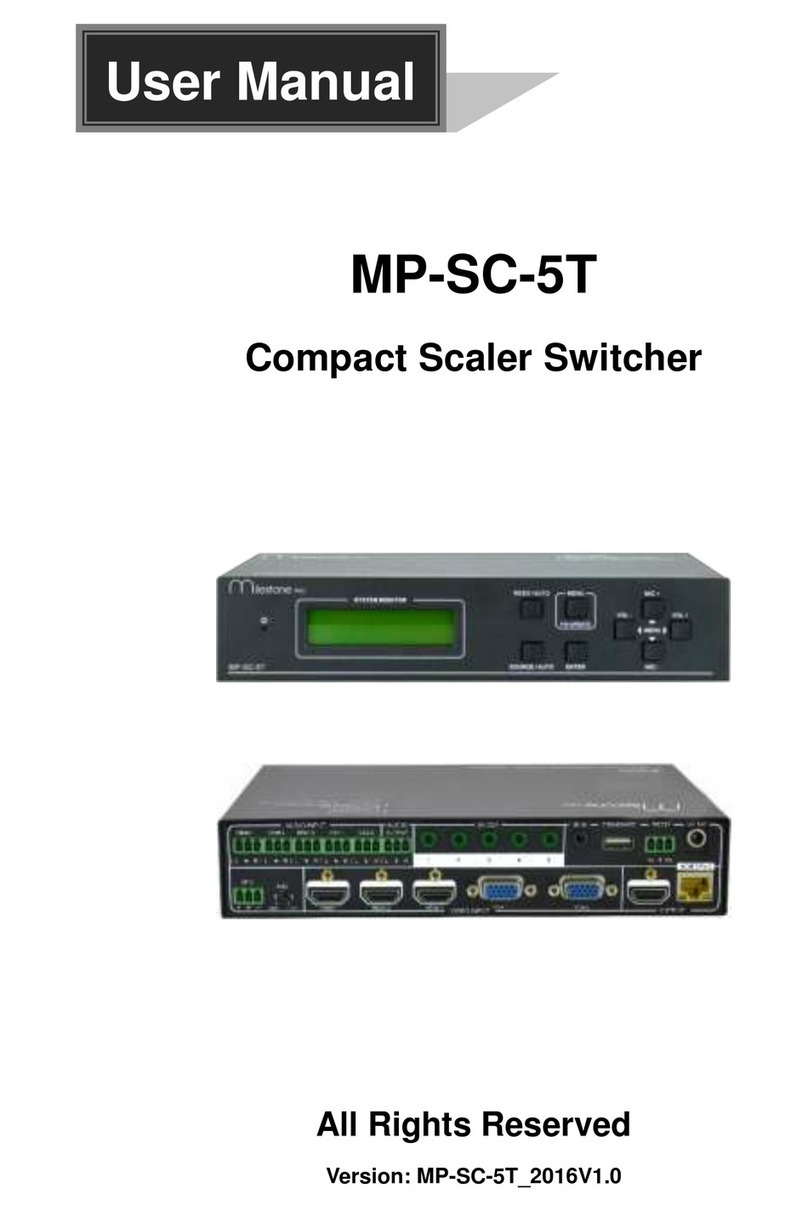
Milestone pro
Milestone pro MP-SC-5T user manual
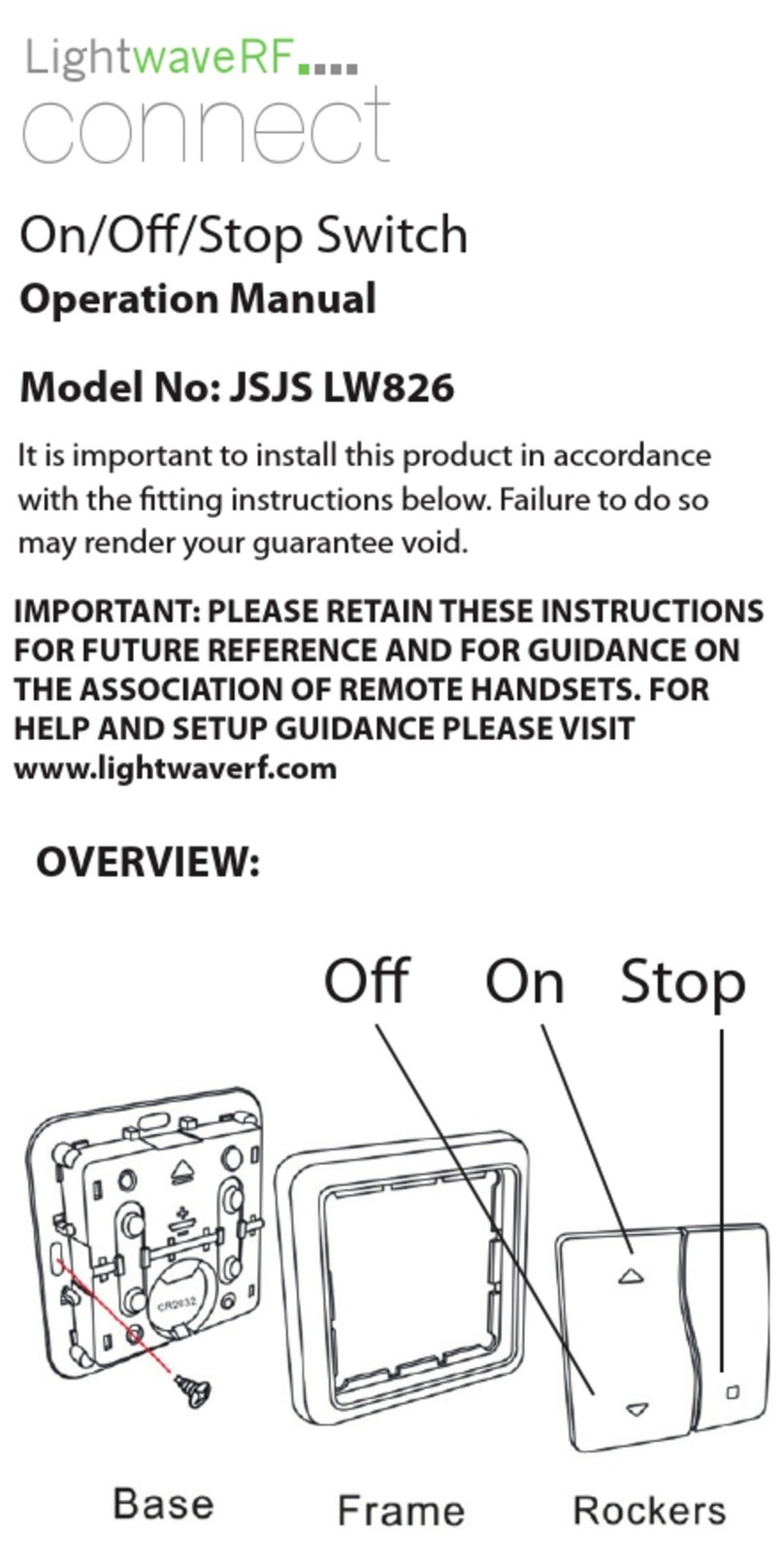
LightwaveRF
LightwaveRF JSJS LW826 Operation manual
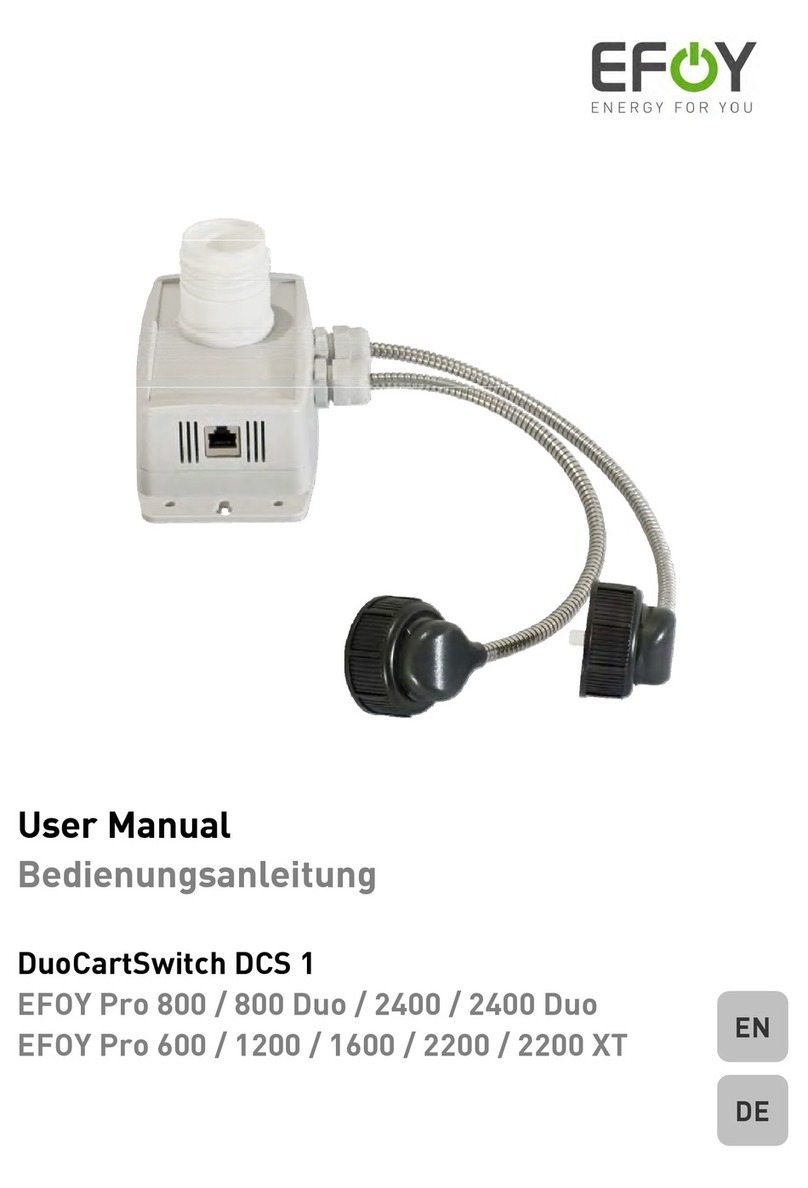
EFOY
EFOY DuoCartSwitch DCS 1 user manual

Cisco
Cisco Catalyst 9400 Series System Management Configuration Guide
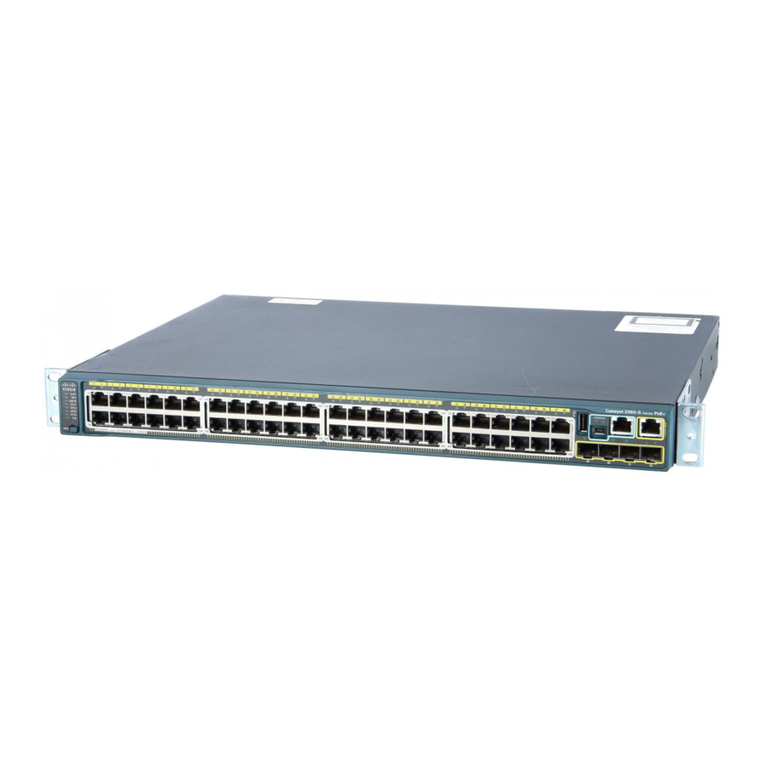
Cisco
Cisco Catalyst 2960 Series Command reference guide
